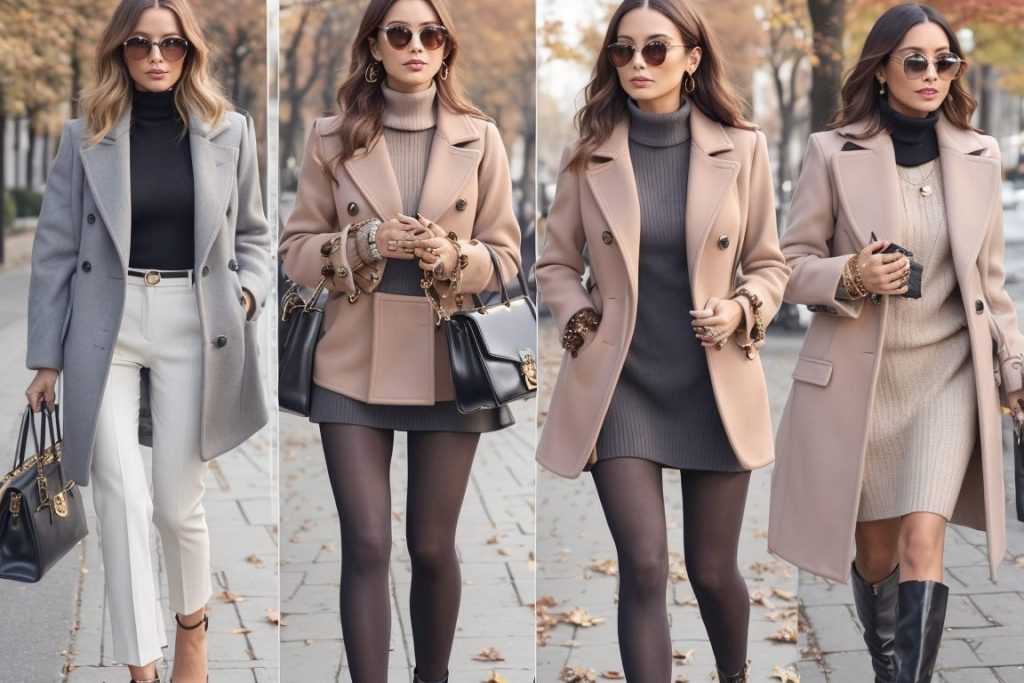Fashion is more than just clothing; it is a language of self-expression that influences how others perceive us and, more importantly, how we feel about ourselves. Knowing the right fashion tips can help you create timeless looks, adapt to changing trends, and present yourself with confidence in any situation. Whether you’re refining your everyday wardrobe or preparing for special occasions, understanding the principles of style can make all the difference.
Understanding Your Personal Style
Before investing in new pieces or following trends, the most important step is identifying your personal style. This ensures your wardrobe reflects who you are rather than just mimicking what’s popular.
How to Define Your Style
-
Evaluate your lifestyle: Do you spend more time in professional environments, casual settings, or social events?
-
Create a mood board: Collect images from magazines, Pinterest, or Instagram that reflect the outfits and aesthetics you admire.
-
Note recurring patterns: Are you drawn to minimalism, bold prints, or classic tailoring? Recognising these patterns helps shape your core style.
By defining your personal style early on, you can make mindful choices rather than impulsive purchases.
Building a Versatile Wardrobe
A well-rounded wardrobe doesn’t need to be filled with hundreds of items. Instead, it should contain versatile pieces that can be mixed and matched seamlessly.
Key Wardrobe Essentials
-
White shirt or blouse: A timeless piece that works for both formal and casual occasions.
-
Tailored blazer: Instantly adds sophistication and structure.
-
Dark denim jeans: A pair that fits perfectly is invaluable for day-to-night transitions.
-
Neutral knitwear: Works for layering during colder months.
-
Classic black dress: Elegant, effortless, and suitable for countless events.
When building your wardrobe, prioritise quality over quantity. Investing in durable fabrics and well-tailored cuts ensures your clothes last longer and look refined.
Choosing Fabrics and Fit
The foundation of a great outfit lies in fabric choice and fit. Even the most stylish design will fall flat if the material feels cheap or the fit is off.
-
Fabrics to prioritise: Cotton, wool, linen, and silk for breathability and durability.
-
Perfecting the fit: Clothes should skim your body without being too tight or oversized. Consider alterations for items that don’t fit perfectly off the rack.
Colour Coordination in Fashion
Understanding colour coordination is essential for curating outfits that look cohesive and stylish.
Colour Tips
-
Neutrals as a base: Shades like black, navy, beige, and grey make mixing and matching effortless.
-
Accent colours: Adding one bold colour, such as red or emerald green, elevates a neutral outfit.
-
Skin tone awareness: Warmer undertones pair well with earthy shades, while cooler undertones shine in jewel tones.
Experimenting with colour helps you express different moods without overwhelming your style.
Accessories: Small Details, Big Impact
Accessories complete an outfit and often serve as the defining detail.
-
Belts: A simple belt can transform the silhouette of a dress or oversized shirt.
-
Jewellery: Choose delicate pieces for subtle elegance or statement pieces to showcase personality.
-
Scarves: Ideal for layering and adding texture.
-
Bags: A structured handbag works for formal looks, while crossbody or tote bags offer practicality for daily wear.
Fashion Tips for Different Occasions
Office Wear
-
Opt for tailored trousers, crisp shirts, and structured blazers.
-
Keep colours professional, leaning on neutrals with occasional muted tones.
-
Shoes should be polished; loafers or classic pumps are dependable choices.
Casual Outfits
-
Combine comfort with style through denim, trainers, and relaxed tops.
-
Layer with lightweight jackets to add structure without formality.
-
Stick to breathable fabrics for everyday comfort.
Evening Events
-
A little black dress or tailored suit creates instant sophistication.
-
Metallic accessories, clutch bags, and heels add glamour.
-
Ensure fabrics like satin or silk complement the occasion’s formality.
Sustainable Fashion Choices
Fashion should not only be stylish but also mindful. Sustainable choices benefit both the environment and your wardrobe.
-
Buy less but better: Prioritise quality pieces that will last.
-
Choose timeless designs: Avoid trend-driven items that lose relevance quickly.
-
Opt for eco-friendly fabrics: Organic cotton, recycled fibres, and bamboo are great alternatives.
-
Second-hand shopping: Vintage and charity shops often hold unique finds.
Grooming and Presentation
Your outfit is only part of the equation; grooming completes your look.
-
Keep clothing wrinkle-free with proper ironing or steaming.
-
Shoes should be clean and polished.
-
Hair and skincare routines enhance your overall appearance.
Common Fashion Mistakes to Avoid
-
Wearing clothes that don’t fit properly.
-
Over-accessorising, which can overwhelm your outfit.
-
Ignoring footwear and relying on worn-out shoes.
-
Following every trend without considering whether it suits you.
FAQs
How can I look stylish on a budget?
You don’t need expensive clothing to look fashionable. Focus on versatile basics, shop during seasonal sales, and explore second-hand or vintage shops for affordable yet stylish finds.
How often should I update my wardrobe?
A complete overhaul isn’t necessary every season. Instead, update selectively with a few trend-inspired pieces while keeping your core wardrobe intact.
Are fashion rules still relevant today?
Traditional fashion rules are now more flexible. While they can serve as guidelines, personal expression should always take precedence. Style is most powerful when it reflects individuality.
What is the best way to experiment with trends without overspending?
Incorporate trends through accessories such as scarves, jewellery, or footwear. This allows you to explore seasonal styles without investing heavily in items that may not last.
How can I maintain my clothes for longer?
Proper care ensures durability. Wash items according to their labels, store them neatly, and rotate your wardrobe to prevent overuse of specific pieces.

